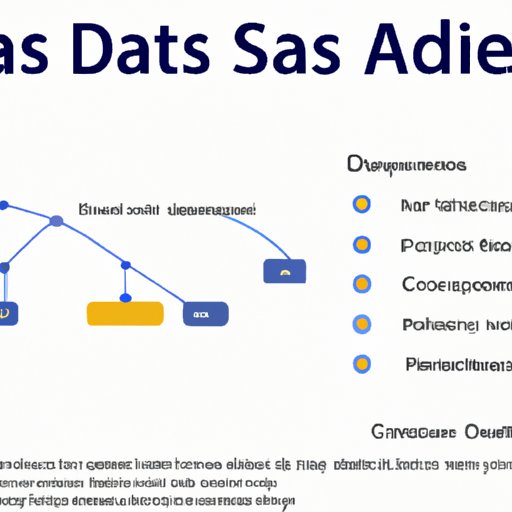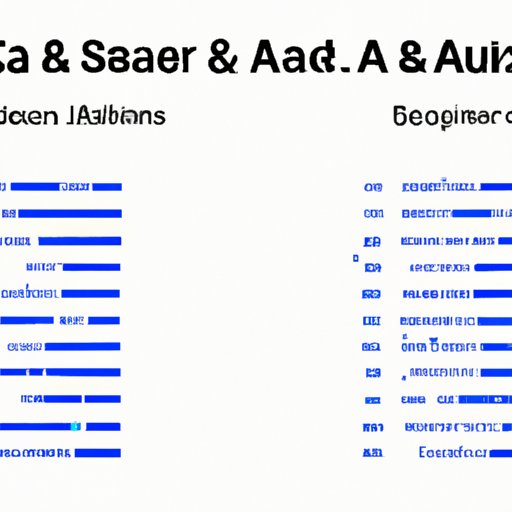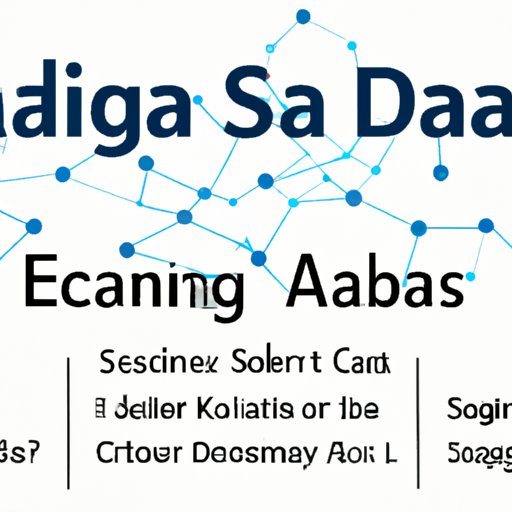Introduction
Data science is a rapidly growing field that involves collecting, processing, and analyzing large amounts of data in order to gain insights and make better decisions. To achieve this goal, data scientists rely on powerful tools such as SAS (Statistical Analysis System). In this article, we will explore the benefits of using SAS for data science, analyze its impact on data science workflows, and discuss its applications.
Exploring the Benefits of Using SAS in Data Science
SAS is an integrated software suite of advanced analytics, statistical analysis, and data management. It offers a range of features and capabilities that can help data scientists increase efficiency, improve accuracy, and enhance analytical capabilities. Let’s take a closer look at these benefits.
Increased Efficiency
SAS enables data scientists to quickly and easily access and process data from multiple sources. This makes it easier to generate reports and visualizations in less time. According to a study conducted by the International Institute for Analytics, “SAS users are able to complete tasks in half the time of other analytics tools.” This increased efficiency can help data scientists save time and resources.
Improved Accuracy
Data quality is key for accurate results. SAS helps data scientists ensure data accuracy by providing built-in data validation and quality checks. This helps reduce errors and improves the reliability of the results.
Enhanced Analytical Capabilities
SAS offers a wide range of advanced analytics capabilities, including predictive and prescriptive analytics, machine learning algorithms, text mining, and more. These features allow data scientists to develop sophisticated models and uncover meaningful insights from their data.
Analyzing the Impact of SAS on Data Science Workflows
SAS can streamline data science workflows and help data scientists maximize their productivity. Here are some of the ways SAS can be used to optimize data science processes.
Streamlining Data Processing
Data processing is a critical part of any data science project. SAS enables data scientists to quickly and easily access and manipulate data from different sources. This helps reduce the time needed to prepare and clean data, freeing up data scientists to focus on more complex tasks.
Automating Model Development
SAS provides numerous features and functions that can be used to automate model development. This includes automated feature selection, automated hyperparameter tuning, and automated model deployment. These features help reduce the amount of manual effort required to build and deploy models.
Simplifying Visualization
SAS offers a wide range of visualization options, including charts, graphs, maps, and more. This makes it easier for data scientists to quickly create compelling visuals that can be used to communicate insights and tell stories with data.

An Overview of SAS Applications in Data Science Projects
SAS can be used for a variety of data science tasks, including data preparation, machine learning, and text mining. Here is a brief overview of how SAS can be used in each of these areas.
Data Preparation
Data preparation is a critical step in any data science project. SAS provides a range of tools and functions that can be used to clean, transform, and enrich data. This makes it easier to prepare data for analysis.
Machine Learning
SAS provides a comprehensive suite of machine learning algorithms that can be used for predictive modeling, clustering, classification, and more. This allows data scientists to quickly build and deploy models that can be used to uncover valuable insights from data.
Text Mining
SAS can be used for text mining tasks such as text classification, sentiment analysis, and entity extraction. This makes it easier to extract meaningful insights from unstructured data.

A Comparison of SAS and Other Data Science Tools
SAS is one of many data science tools available. Here is a comparison of the advantages and disadvantages of using SAS compared to other tools.
Advantages of SAS over Other Tools
SAS offers a range of features and capabilities that make it well suited for data science projects. These include built-in data validation and quality checks, automated model development, and a wide range of visualization options. Additionally, SAS is easy to use and requires minimal coding experience.
Disadvantages of SAS Compared to Other Tools
SAS is more expensive than some other data science tools, such as Python and R. Additionally, SAS does not offer the same level of flexibility as some other tools, so it may not be suitable for certain types of projects.

How to Get Started with SAS for Data Science Projects
Getting started with SAS for data science projects is relatively simple. Here are the steps you need to follow to get started with SAS.
Installing SAS
The first step is to install SAS on your computer. SAS is available in both desktop and cloud versions, so you can choose the version that best meets your needs.
Learning the Basics of Programming with SAS
Once you have installed SAS, the next step is to learn the basics of programming with SAS. This includes learning the syntax and commands used to write SAS programs.
Accessing Resources for Further Learning
There are a number of excellent resources available to help you learn SAS. These include online courses, tutorials, and documentation. You can also find helpful tips and advice from experienced SAS users in online forums.
Conclusion
SAS is a powerful tool that can help data scientists increase efficiency, improve accuracy, and enhance analytical capabilities. It can streamline data science workflows and simplify tasks such as data preparation, machine learning, and text mining. If you are looking for a robust and reliable tool for data science projects, SAS is worth considering.
(Note: Is this article not meeting your expectations? Do you have knowledge or insights to share? Unlock new opportunities and expand your reach by joining our authors team. Click Registration to join us and share your expertise with our readers.)
